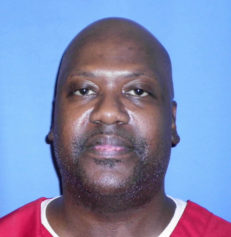
Supreme Court Building in Washington. (AP Photo/J. Scott Applewhite, File)
WASHINGTON (AP) — President Donald Trump’s travel ban offers the Supreme Court the chance to make a major pronouncement on the president’s power over immigration. But the case also could vanish into the legal ether, and that may be what a majority of the court is hoping for.
Getting rid of the case would allow the justices to avoid second-guessing the president on a matter of national security or endorsing an especially controversial part of Trump’s agenda.
The timetable surrounding the travel ban could make that possible.
The court will hear a challenge to the temporary pauses on visitors from six mostly Muslim countries and refugees worldwide in less than a month.
But even before that happens, the 90-day travel ban expires on Sept. 24. The refugee ban lapses a month later.
The administration has yet to say whether it will impose new bans, how long they might last and what countries may be affected. Iran, Libya, Somalia, Sudan, Syria and Yemen are the six countries covered by the existing ban.
The high court could react by ruling that a new lawsuit is necessary or ordering lower courts that have handled the challenges so far to assess the new policy.
So far, the court has stepped in three times to evaluate what parts of the policy can take effect even as legal challenges proceed in the courts.
Chief Justice John Roberts may have the most at stake among the justices in finding a way out of the case without passing judgment on the controversy over a policy Trump talked about during the campaign and then rolled out a week into his presidency.
“It creates political controversy whether the court approves or rejects the travel ban,” said Ilya Shapiro, editor-in-chief of the libertarian Cato Institute’s Supreme Court review.
Shapiro said Roberts would strongly prefer any way to get the case out of his court rather than come down on either side of tough questions dealing with the Constitution and immigration law.
Top Justice Department officials in previous Democratic and Republican administrations agreed. “There’s incentive to not decide very much at all,” said Donald Verrilli, the solicitor general for most of President Barack Obama’s tenure.
Several other justices may be willing to help Roberts get there, said Jeffrey Rosen, president of the National Constitution Center.
The court’s pronouncements about the travel ban so far have either been by consensus or a six-justice majority including the more conservative Roberts, Justice Anthony Kennedy and the four more liberal members of the court, Stephen Breyer, Ruth Bader Ginsburg, Elena Kagan and Sonia Sotomayor.
“The liberal justices, especially the pragmatic liberals Breyer and Kagan, will do anything to allow Roberts to avoid a substantive constitutional decision,” Rosen said.
In part, their motivation stems from a widely held view that the case is difficult to predict. Presidents have substantial power over immigration and courts typically are reluctant to undercut executive authority, especially when presidents say national security is at stake.
That argument is at the heart of the administration’s defense of the Trump policy. The challenges shouldn’t have made it this far, the administration has told the court.
On the other side, opponents of Trump’s policy have persuaded two federal appeals courts that Trump has either overstepped his authority under immigration law or violated the Constitution’s protections against religious bias. Trump’s campaign statements calling for a ban on Muslims entering the United States and tweets while president have figured in the rulings.
Just last week, Trump returned to the travel ban after a bomb partially exploded on a London subway. “The travel ban into the United States should be far larger, tougher and more specific — but stupidly, that would not be politically correct!”
At one point in July, the court hashed out an order when Roberts was in Australia, Kennedy was in Austria and other justices were in time zones in between. The product of their collaboration was an unsigned order that said grandparents, cousins and other similar relations could not be excluded under the travel ban, while refugees who already had a relationship with resettlement agencies in the U.S. could be kept out of the country.
Justices Samuel Alito, Neil Gorsuch and Clarence Thomas, would have let the administration set more restrictive conditions on family members from the six countries.
The outcome appeared to be the product of “cross-party consensus about what to do,” said Irv Gornstein, executive director of Georgetown law school’s Supreme Court Institute.
Justices rarely explain what goes on in their private deliberations, but in late July Ginsburg offered a peek to an audience in Aspen, Colorado.
The court’s three grandparents were unhappy with one aspect of the travel ban, she said.
“The government’s restrictive interpretation had no provision for grandparents. I commented that three justices are obviously not going to put up with that — Justice Kennedy, Justice Breyer and me,” Ginsburg said.


